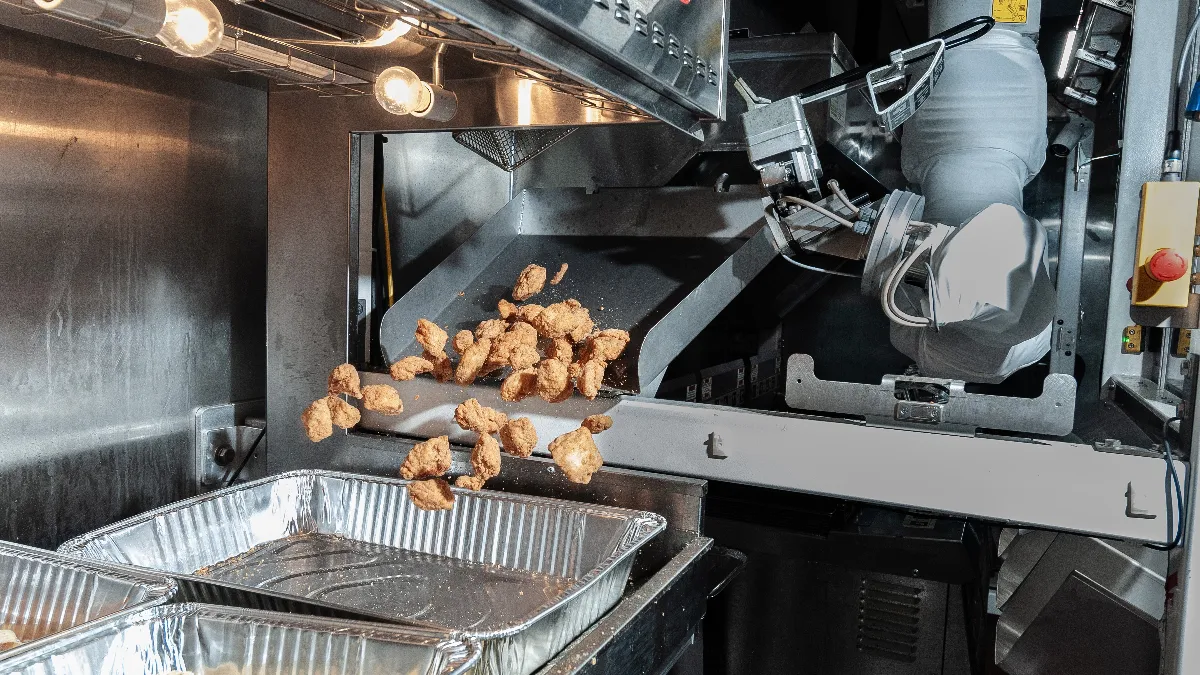Dive Brief:
- Miso Robotics is speeding up its development process by partnering with Amazon Web Services, which will allow Miso to test new configurations of its robots more rapidly, according to a press release.
- The AWS RoboMaker, a robotics simulation tool, will enable Miso to run at least 40 simulations at a time, Chris Kruger, Miso’s CTO, told Restaurant Dive in an email. Previously, Miso ran about 12 simulations per month, according to the release, but AWS’s technology will allow it to run 100 simulations in one night.
- The AWS partnership will help Miso improve software and product configurations, and compare technical expectations to data from units that have already been deployed.
Dive Insight:
Continued improvements to Miso’s offerings are important, especially as different kitchen configurations and menu items require the robot to change its behavior, Jacob Brewer, Miso's chief strategy officer, told Restaurant Dive last month. Wings, Brewer said, require different robotics functionalities than french fries, for example.
Miso’s simulations started out simply, Kruger said, but as the company gained operational experience, it increased the complexity of testing. This shift enabled Miso to identify different pain points and test configurations to solve or mitigate them.
“One problem we realized that Flippy was having was baskets tipping over. Now we have that happen in simulation to ensure Flippy can pick them up,” Kruger said.
This testing is important because the company runs simulations for every Flippy unit and for every different restaurant configuration, Kruger said. The AWS partnership speeds up that testing process, allowing engineers to get results within minutes or hours instead of having to wait days.
"Integrating into AWS RoboMaker has been a gamechanger for us to scale our products and make sure the software and its updates are ready to deploy with units in the field," Kruger said in a press release. "By testing hundreds of configurations in parallel, we are able to save costs and develop products faster."
More simulations, combined with data from units in the field, will make it easier for the company to update and refine its robot, Miso said. Flippy 2 is the second generation of Miso's flagship fry station robot. Brewer said the company made a number of changes between Flippy and Flippy 2 based on operational data and field experience. Miso changed the robot's design so that workers wouldn't have to load any baskets, and sped up the robot's movements, among other changes, Brewer said.
Miso has already increased its development speed, and was able to bring Flippy Lite to market in less than a year, thanks in part to operational knowledge and new simulations, Kruger said.
Speeding up the company's development process could help service growing QSR interest in robots. In February, White Castle said it would deploy Flippy 2 at 100 more units following successful initial tests. Jack in the Box announced in April that it intended to test Flippy 2 and Miso's drink robot, Sippy, at a store this year. Wing Zone also committed to deploying Flippy 2 in all of its future units in May. As more companies look to trim labor costs and speed up throughput, Miso may need to test, deploy and update products faster than it had previously.












